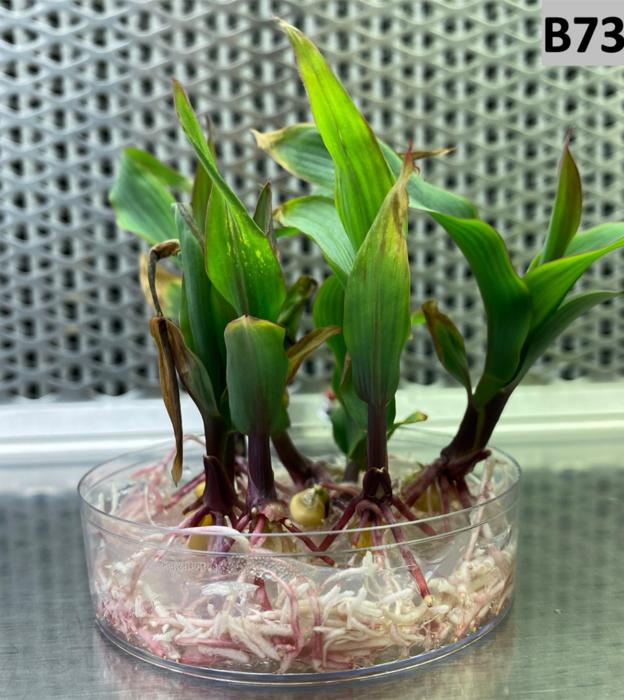Corn, scientifically known as maize, is an agricultural cornerstone embedded in various facets of everyday life—from the breakfast cereals lining supermarket shelves to the biofuels powering vehicles, as well as in pharmaceuticals and animal feed. Despite its ubiquity, advancing maize genetics through bioengineering remains a formidable challenge due to technical constraints and resource demands. Recent collaborative research involving Boyce Thompson Institute (BTI), Iowa State University (ISU), and Corteva Agriscience has unveiled a groundbreaking technique poised to democratize maize transformation, potentially revolutionizing crop improvement methodologies across academic and industrial settings.
For thousands of years, humans have selectively bred plants to optimize traits beneficial for food production and other uses. While traditional breeding has yielded dependable varieties, modern demands and environmental pressures necessitate more precise modifications. Enter bioengineering: a suite of molecular tools enabling scientists to directly alter plant genomes. This precision breeding not only accelerates trait incorporation but also allows for complex changes, such as enhancing drought tolerance or nutritional profiles. However, implementing these genetic modifications in maize has historically been fraught with hurdles, especially for widely used genotypes like B73, central to genetic and functional studies.
Recognizing this bottleneck, the team spearheaded by Dr. Joyce Van Eck developed an alternative transformation strategy utilizing young seedling leaf whorls rather than embryos. Leaf whorls—compact clusters of developing leaves in juvenile maize plants—offer a readily accessible target for gene insertion. Since seedlings require a fraction of the growth time needed for mature embryo harvesting, this approach drastically reduces infrastructural demands. By circumventing the embryo extraction stage, researchers can now initiate transformations in basic growth environments, broadening the accessibility of maize bioengineering to a wider scientific community.
The comparative study assessed transformation efficiencies across two maize genotypes: PHR03, known for favorable responsiveness, and B73, notorious for its resistance to genetic modification. Remarkably, the leaf whorl technique coupled with the public helper plasmid yielded comparable transformation success rates in both genotypes. This achievement underscores the robustness of the approach, even in genotypes previously regarded as challenging or impractical for genetic studies, thereby unlocking new avenues for functional genomics and trait discovery in maize.
One of the critical elements of this methodology is the streamlined timeline. Seedlings only need to grow for approximately two weeks before their leaf whorls are primed for transformation, contrasting starkly with the 8 to 12 weeks required to cultivate plants to the stage of embryo collection. This temporal efficiency not only accelerates experimentation cycles but also reduces operational costs associated with space, labor, and controlled environmental conditions. Institutions previously constrained by such logistical challenges stand to benefit profoundly from this innovation.
Aside from technical merits, the study highlights the importance of federal funding in underpinning such advancements. The National Science Foundation’s (NSF) investment through the Center for Research on Programmable Plant Systems (CROPPS) was instrumental in facilitating this breakthrough. Support extended beyond equipment and materials, encompassing training and fostering the next generation of bioengineering scientists capable of propelling maize research into a new era. Postdoctoral researcher Dr. Ritesh Kumar, a key contributor, emphasizes how participation in this project has equipped him with crucial expertise, enhancing workforce development in a field confronted by specialized talent shortages.
Looking ahead, the researchers are investigating the adaptability of leaf whorl-based transformation across diverse maize genotypes associated with valuable agronomic traits, such as enhanced resistance to environmental stresses and pathogens. While each genotype may present unique optimization challenges, the versatile platform promises to expedite the integration of complex traits into breeding pipelines. This systematic expansion will not only deepen fundamental understanding of maize biology but also facilitate the creation of superior cultivars tailored for future agricultural demands.
The impact of this research transcends plant science laboratories. By lowering barriers to maize genetic transformation, the approach potentially accelerates crop improvements that will benefit farmers, consumers, and ecosystems alike. The ability to efficiently introduce traits like disease resistance or enhanced nutrient content promises to sustain food security amid climate uncertainties. Furthermore, this method enhances the feasibility of translational research, bridging discovery and application to meet global challenges in sustainable agriculture.
In sum, the leaf whorl transformation protocol represents a significant leap forward in maize bioengineering, merging scientific innovation with practical accessibility. The collective efforts of academic and industry scientists have yielded a versatile, resource-efficient platform that democratizes plant genetic engineering. As this technology proliferates, it can catalyze a new wave of genetic research and crop development, bringing us closer to resilient, high-yield maize varieties essential for feeding the growing population.
As maize research evolves through such collaborative triumphs, it exemplifies the power of interdisciplinary partnerships bolstered by public funding and open-science principles. The continuous refinement of transformation techniques will undoubtedly empower researchers globally, fostering innovations that drive agricultural sustainability and improved human well-being for generations to come.
Subject of Research: Cells
Article Title: Comparative analysis of maize leaf whorl-based transformation using ABA-induced Bbm/Wus2 removal in two Agrobacterium ternary vector systems
News Publication Date: 30-Apr-2025
Web References:
https://doi.org/10.1007/s11627-025-10531-7
https://cropps.cornell.edu/research/plant-programming/
https://cropps.cornell.edu/
https://doi.org/10.1038/s41477-022-01338-0
https://doi.org/10.3389/fpls.2022.860971
https://www.ipb.iastate.edu/people/kan-wang
Welcome to Boyce Thompson Institute – Discovery inspired by plants
References:
Van Eck, J., Kumar, R., Gordon-Kamm, W., Wang, N. (2025). Comparative analysis of maize leaf whorl-based transformation using ABA-induced Bbm/Wus2 removal in two Agrobacterium ternary vector systems. In Vitro Cellular & Developmental Biology – Plant. DOI: 10.1007/s11627-025-10531-7
Image Credits: Boyce Thompson Institute, Van Eck Lab
Keywords: Maize, Maize genomes, Crop domestication, Crop production, Crop yields, Agrobacterium
Tags: Boyce Thompson Institute researchchallenges in maize geneticscollaborative research in crop improvementCorteva Agriscience innovationsdemocratizing maize transformationenhancing drought tolerance in maizegenetic modification of maizeIowa State University agricultural studiesmaize bioengineering techniquesmodern plant breeding methodsnutritional enhancement of maizeprecision breeding in agriculture





